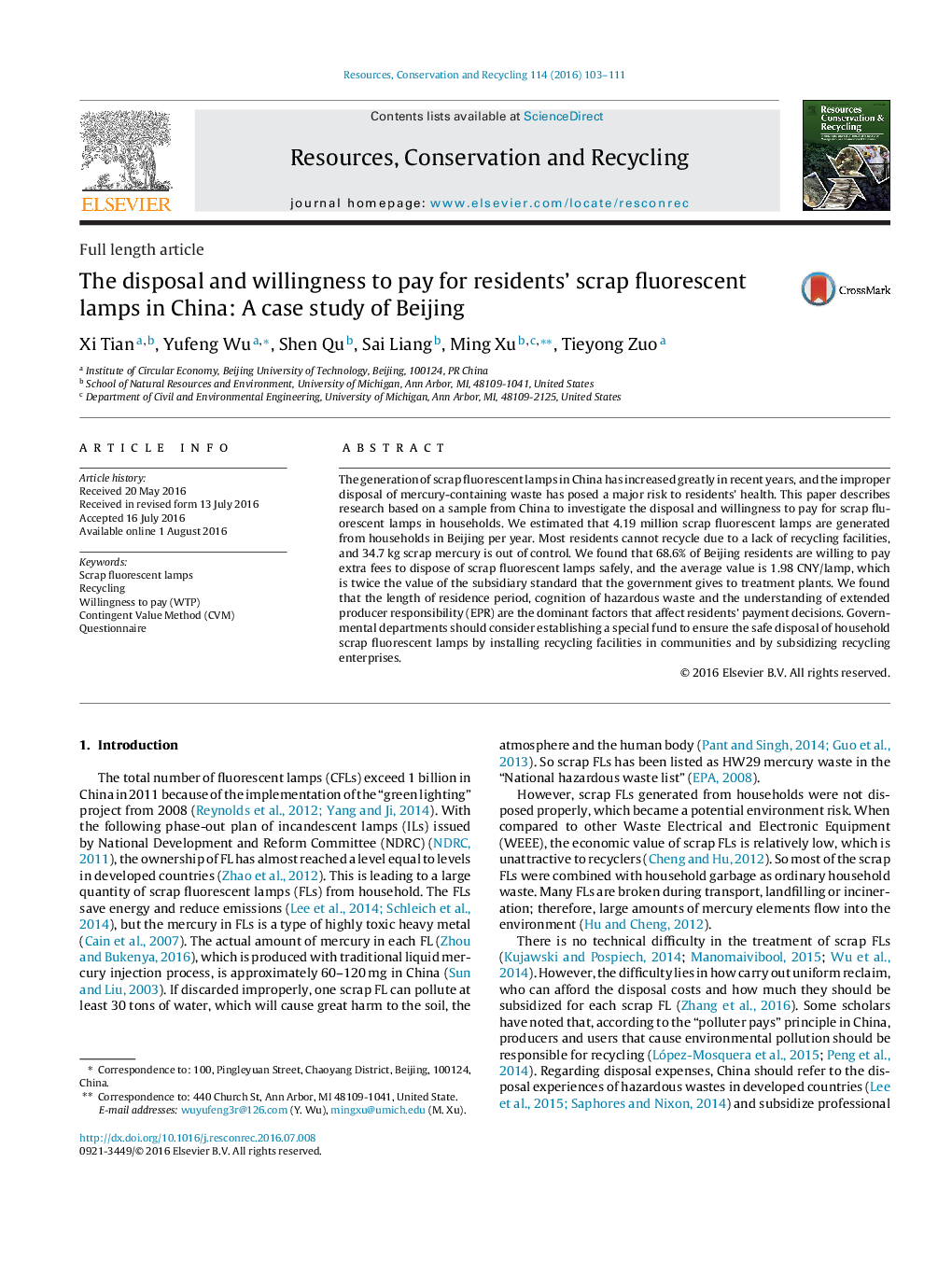| کد مقاله | کد نشریه | سال انتشار | مقاله انگلیسی | نسخه تمام متن |
|---|---|---|---|---|
| 1062666 | 1485677 | 2016 | 9 صفحه PDF | دانلود رایگان |
• Mercury risk of scrap fluorescent lamps in China posed a threat to residents.
• Residents have recycling awareness but cannot find proper facilities.
• The investigated value of WTP is twice of the subsidiary to treatment plants.
• Three key factors affecting residents payment decisions are found.
The generation of scrap fluorescent lamps in China has increased greatly in recent years, and the improper disposal of mercury-containing waste has posed a major risk to residents’ health. This paper describes research based on a sample from China to investigate the disposal and willingness to pay for scrap fluorescent lamps in households. We estimated that 4.19 million scrap fluorescent lamps are generated from households in Beijing per year. Most residents cannot recycle due to a lack of recycling facilities, and 34.7 kg scrap mercury is out of control. We found that 68.6% of Beijing residents are willing to pay extra fees to dispose of scrap fluorescent lamps safely, and the average value is 1.98 CNY/lamp, which is twice the value of the subsidiary standard that the government gives to treatment plants. We found that the length of residence period, cognition of hazardous waste and the understanding of extended producer responsibility (EPR) are the dominant factors that affect residents’ payment decisions. Governmental departments should consider establishing a special fund to ensure the safe disposal of household scrap fluorescent lamps by installing recycling facilities in communities and by subsidizing recycling enterprises.
Journal: Resources, Conservation and Recycling - Volume 114, November 2016, Pages 103–111
